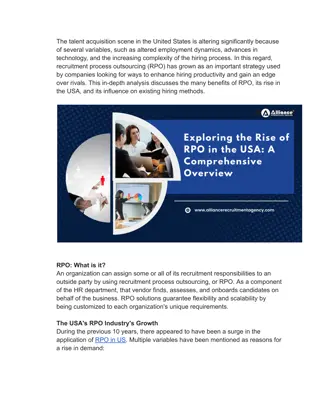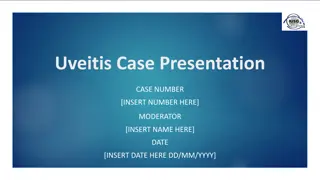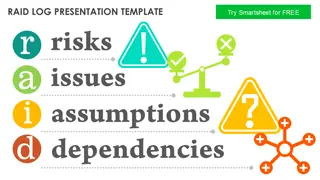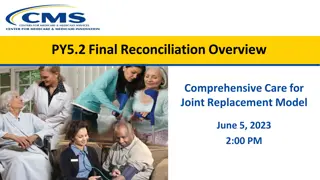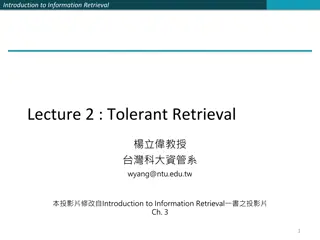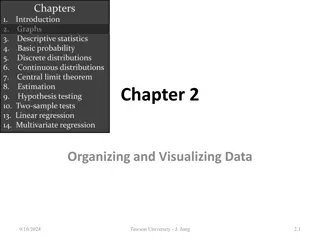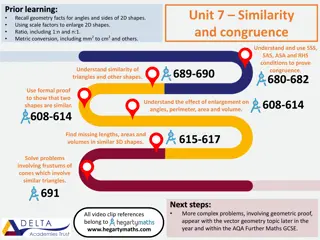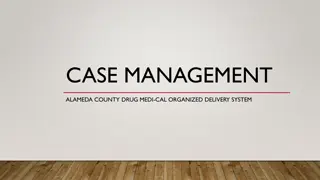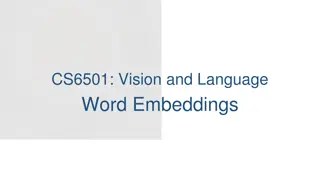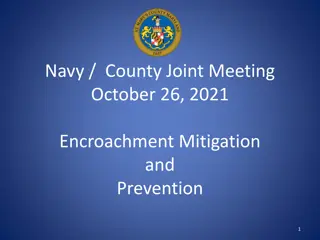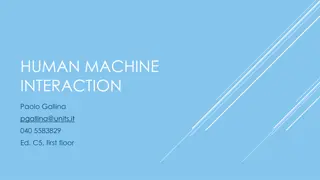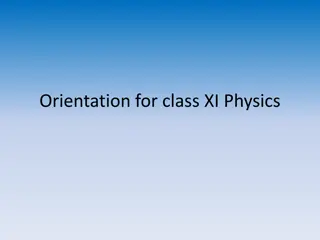Urogynaecology: A Comprehensive Overview
Urogynaecology is a subspecialty of Gynaecology that focuses on female lower urinary tract and genital tract issues. This field has evolved significantly with the introduction of Urodynamics in 1970, leading to better diagnoses and management of conditions like urinary incontinence and pelvic organ prolapse. The importance of identifying symptoms, the role of multidisciplinary teams, and the need for integrated care pathways are highlighted. The impact of urogynaecological problems on individuals and the healthcare system is significant, making early recognition and management crucial.
Download Presentation

Please find below an Image/Link to download the presentation.
The content on the website is provided AS IS for your information and personal use only. It may not be sold, licensed, or shared on other websites without obtaining consent from the author.If you encounter any issues during the download, it is possible that the publisher has removed the file from their server.
You are allowed to download the files provided on this website for personal or commercial use, subject to the condition that they are used lawfully. All files are the property of their respective owners.
The content on the website is provided AS IS for your information and personal use only. It may not be sold, licensed, or shared on other websites without obtaining consent from the author.
E N D
Presentation Transcript
Urogynaecology Jane Wolfe Specialist Urogynaecology Nurse
Aims and objectives To define the subspecialty Urogynaecology. To identify main symptoms and conditions. To review the QEH Female Continence Pathway. To review the role of Urogynaecology MDT. To Identify what needs to be done before referral to secondary care. Overview Urodynamics Overview of treatments and management of common Urogynaecology conditions. Questions and discussion
Urogynaecology?? Urogynaecology is a subspecialty of Gynaecology. Concerns problems of female lower urinary tract and genital tracts. Until the advent of Urodynamics in 1970 diagnosis was made on the basis of clinical assessment which often lead to inappropriate diagnosis and disappointing results.
A recent audit of referrals to QEH Gynaecology (excluding post menopausal bleeding) showed that 40% cases referred had Urogynaecology problems. Urinary incontinence significantly disrupts the lives of about 5% of the home dwelling adult population. Affects all ages, most common in the elderly especially those living in institutions. Common reason for falls in the elderly . The Bladder and Bowel Foundation quote 1 in 4 women and 1 in 9 men will suffer form of incontinence that affects QOL at some stage of their lives.
MDT We have a well established Urogynaecology Multidisciplinary team based at the QEH This involves partnership working between primary and secondary care practitioners Strong links with tertiary centres Have published and presented audits and studies at several regional and National Urogynaecology forums. Our MDT approach was one of the first in the country to adopt an Integrated Pathway of care for female continence.
Main symptoms/signs Incontinence of urine with or without urgency Voiding difficulty.-hesitancy/ retention Sensory absence of bladder sensation during filling and or voiding. Feeling of incomplete voiding. Nocturia Recurrent urinary tract infection. Pelvic organ prolapse with or without urinary symptoms.
Most common conditions diagnosed Urodynamic Stress Incontinence Incontinence of urine in the absence of detrusor contraction Detrusor Overactivity- Urinary urgency, usually accompanied by frequency and nocturia, with or without urinary incontinence, in the absence of urinary tract infection or other obvious pathology. Bladder Oversensitivity Increased sensation to void during bladder filling up to a strong sensation to void.
Mixed urinary incontinence Combination of detrusor overactivity and USI . Pelvic organ prolapse The descent of one or more of the anterior vaginal wall, posterior vaginal wall , the uterus or the vaginal vault. Voiding dysfunction Abnormally slow flow and/or incomplete micturition/retention of urine.
Multi disciplinary approach NICE Guideline CG171 Urinary incontinence in women : The management of urinary continence in women. September 2013
The QEH Urogynaecology team Urogynaecologist Urogyanecology Specialist Registrar Urologist Specialist Nurses Urogynaecology and Urology Women s Health Physio s (Gynae and Obstertric) Community and hospital Continence Advisors GP s Clinical Psychologist
Who does what GP s direct referrals to Continence Advisor, Liaise with MDT. Continence Advisors- assess, initiate conservative management and treatment, liaise with GP and MDT. Can direct refer to Urogynae secondary care. Specialist Nurses -link between patient and MDT , Perform Urodynamics, recommend management, PTNS treatment, Pessary clinic and joint MDT clinics. Women s Health Physiotherapist- assess and treat , participate in joint clinics , Community Continence Advisors. , 3rddegree tear clinics. Obstetrics pelvic floor clinics. Urogynaecologist -Urodynamics, assess treat /surgery and medical interventions. Urologist surgery, participate in combined Urogynaecology clinic . Clinical Psychologist treatment and assessment of psychological conditions related to Urogynaecology. We would like to have on board- Care of Elderly Consultant, Pharmacist, Colorectal Specialist, more GP s.
Urodynamics Urodynamic investigations are an interactive tests which look at bladder function during phases of bladder filling, storage and voiding. Standard Ambulatory Used for investigation of bladder and urethral disorders and as a predictor of outcome of bladder function post surgical intervention . ( Stress Incontinence and Pelvic organ prolapse repair)
Urodynamic report Summary of findings Recommendations for treatment /management and further investigation Actions required by Consultant GP Community Continence Advisor MDT
What we want GPs to do Refer to Community Continence Advisor who can- Assess , start and oversee conservative management. Liaise with GP re medication. Refer direct to Physio. Can refer direct to Joint clinics- CA and Physio, Combined Urogynae clinic. Can refer direct to MDT meeting for case review. Can refer direct to Urogynae consultants. Can refer direct for Urodynamics. Can refer direct to PTNS treatment.
Secondary management Stress Urinary incontinence Tapes, slings and mesh Colposuspension Urethral bulking Urethral occlusion device Overactive bladder Secondary medication Percutanous Tibial Nerve Stimulation (S2-4) Intravesical Botulinum Sacral Nerve Neuromodulation (S3) Augmentation Cystoplasty /Diversion.
Mixed incontinence Treat dominant symptom first. Voiding difficulty Cystoscopy/ urethral dilatation. Intermittent self catheterization. Indwelling catheter.
Pelvic organ prolapse Conservative management Pelvic floor exercises electrotherapy /biofeedback. Vaginal Pessary Vaginal Oestrogen Surgical repair Anterior/Posterior repair Hysterectomy Sacrospinous fixation. Colpoclielisis
Pessary clinics Clinics are held weekly . Direct contact with Specialist Nurse. Patients can be seen within 1-2 days if required. Direct access to Urogynaecology MDT Physio, Continence Advisors and Consultants. Can refer direct to two week pathway for PMB.
Pharmacology Overactive bladder -Anticholinergics -NICE Guidance - Consider -co-existing conditions, for example poor bladder emptying and other existing medication affecting the anticholinergic load. Discuss likely side effects dry mouth , constipation and that they may not see full benefits for 4 Weeks. Offer at least two anticholinergics for at least 4 weeks each, face to face review after 4 weeks.
First line anticholinergics Oxybutynin immediate release Do not offer to frail older women. Tolterodine immediate release. Darafenacin not widely available in UK !! Kentera Transdermal patches, if unable to tolerate oral medication.
Second line meds for overactive bladder Anticholinergics Festoterodine, Trospuim,Solifenacin, Other meds Amiytriptyline, Nortriptyline Beta 3 Receptor Mirabegron(Betmega) 5omg daily, 25mg in hepatic impairment. May take up to three weeks to see full benefits.
Vaginal Oestrogen Urothelium and vaginal epithelium are equally affected by oestrogen depletion, used to treat overactive bladder. Useful in recurrent UTI Consider if patient able manage to insert the cream or pessary ! Vagifem Ovestin cream Gynest cream E string lasts 3 months
Final remarks Incontinence is a distressing embarrassing condition that can have a profound effect on quality of life . A recent Gallop survey showed that 70% of sufferers put up with symptoms They failed to seek medical advice and were reluctant to spontaneously talk about their disease. The majority of those that seek help do so only after 4 years of enduring symptoms and unhappiness. It is essential that we ask our patients about bladder and bowels symptoms , as their are now excellent treatments available no need to pad up and put up!!
Thank you for listening! Any comments /questions?






